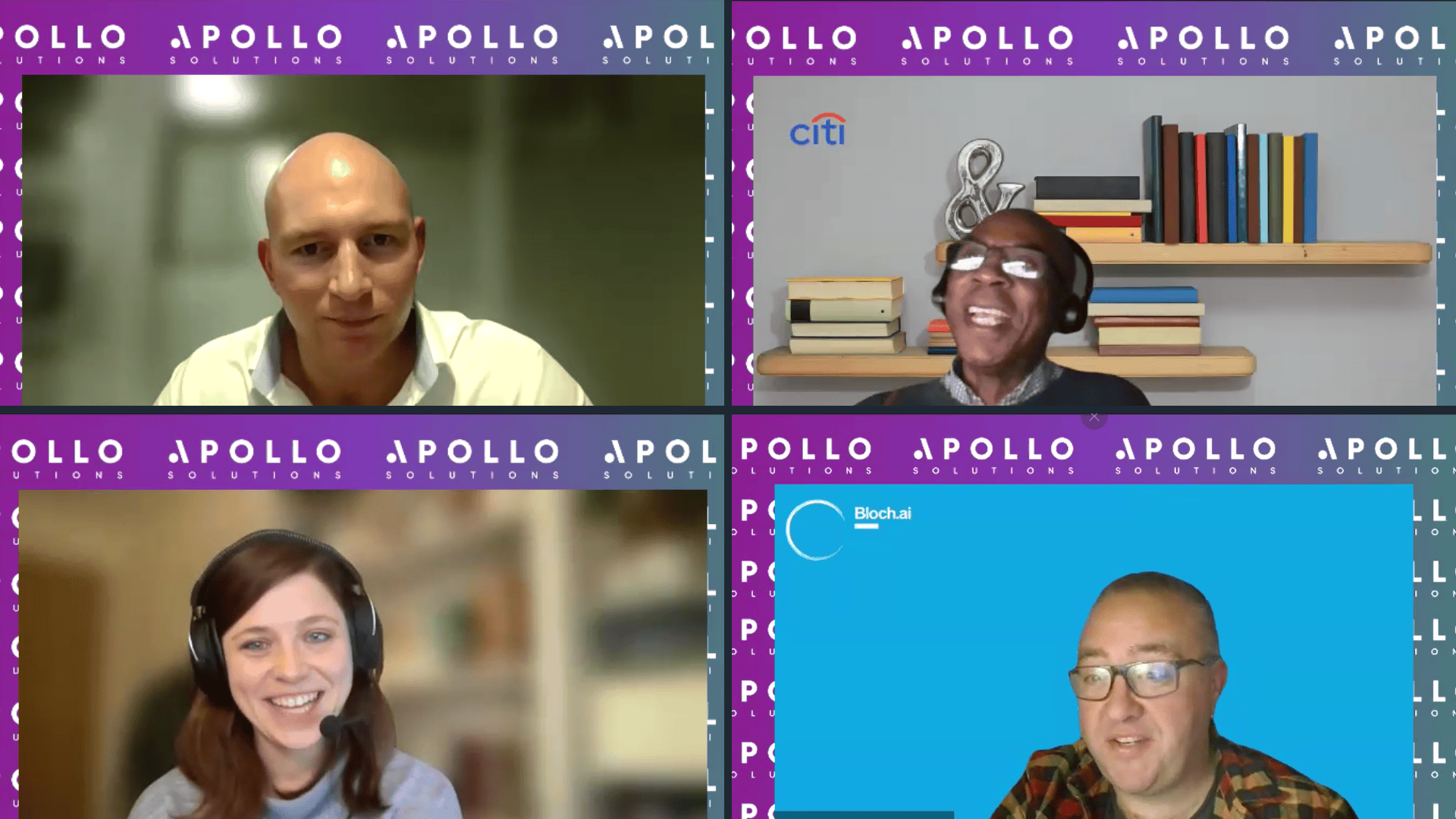The best programming languages to learn in 2024
13 Oct, 202314 minsIt’s an exciting time for software developers and tech professionals alike. With advances in...

It’s an exciting time for software developers and tech professionals alike. With advances in technology continuing to fuel the demand for new programming languages, opportunities for expanding your technical knowledge are abundant!
Looking to progress your tech career? Then this article’s for you. We’ll explore the hottest programming languages currently in high demand, along with their benefits and how to learn them. Let’s step your programming career up a notch!
Why increase your knowledge of programming languages?
So, you want to advance your tech career? Learning the hottest programming languages is key! Why? Because staying up to date with the fast-moving world of technology will help you grow professionally and set you apart from competitors. Having good working knowledge of cutting-edge tools and technologies before they become overly popular will stand you in great stead.
New technologies are emerging all the time, so the secret to success is ensuring you’re proficient in the programming languages most sought after by employers. And we’re not just talking about brand new programming languages – there’s no sign of more traditional options like Java and C#/.Net disappearing any time soon because of their simplified syntax and open-source communities. But being an expert in a programming language can give you an advantage over other job seekers.
Coding is becoming increasingly important across just about every industry, so it’s essential for developers and engineers to hone their skillset by learning trending programming languages so they can continue creating quality products for customers and employers.
What are the current trends?
You don’t need us to tell you that software development trends are ever-changing. And those latest trends have a huge role to play in influencing the demand for certain programming languages.
For instance, as cloud computing and distributed systems become more popular, there’s likely to be a surge in demand for server-side JavaScript frameworks (like Node.js), as well as TypeScript, Flutter, Native React, C++, C#/.Net. and PHP-based frameworks (like Laravel).
Also, as mobile application development continues to be an area of focus, programming languages such as Java and Swift continue to be popular choices because they’re versatile, have robust libraries, and frameworks.
Then there’s Python, a programming language that’s already gained significant traction over the past few years as a go-to language for data engineering pipelines and machine learning applications. And let’s not forget Rust which has emerged as a potential alternative to C++ when it comes to low-level coding tasks (think embedded system development or game engine development).
We also know that programming languages that are simple to use, understand, and maintain will continue to be in high demand, regardless of technological advancements or industry trends. So, what’s made our list of the hottest programming languages for 2024? Let’s take a look…
What are the most in-demand programming languages?
Here are our top 15, in no particular order:
(1) Go-lang (Go)
Overview: Go, also known as Go-lang, has gained significant traction due to its focus on simplicity, performance, and concurrency. It's particularly in desirable for organisations building scalable network servers and concurrent systems. Go's ease of use and performance make it suitable for a wide range of applications.
Most commonly used for: Building scalable network servers, system programming, cloud services, and distributed systems.
Pros: Excellent performance and scalability, built-in support for concurrency, strong standard library.
Cons: Limited generics support, some find the error handling verbose compared to other languages.
(2) JavaScript
Overview: JavaScript remains a powerhouse in web development, with its ability to create interactive and dynamic websites. As one of the most popular programming languages, JavaScript's flexibility and compatibility across different platforms continue to drive its demand in 2023.
Most commonly used for: Web development, creating interactive websites, building mobile applications, and game development.
Pros: Widely supported across all modern browsers, a huge ecosystem with countless libraries and frameworks, versatility and cross-platform compatibility.
Cons: Can be challenging to debug due to its flexibility, inconsistent behaviour across different browsers.
(3) Python
Overview: Python continues to dominate the programming landscape due to its simplicity, versatility, and extensive libraries. It is widely used in various domains, including data science, web development, and artificial intelligence. Its beginner-friendly nature makes it an excellent choice for those new to programming.
Most commonly used for: Data Science, backend development, AI & Machine Learning.
Pros: Easy to learn, good usability, extensive libraries, versatility, loved by 65% of users according to Stack Overflow.
Cons: Dynamic typing, slower execution speed than some other languages, limits in mobile development.
(4) Java
Overview: Java has been around since 1995 but remains a powerful language, widely used for building robust and scalable enterprise-level applications. Its popularity in Android app development and server-side development makes it a versatile choice for various domains.
Most commonly used for: Building enterprise-level applications, Android app development, server-side development, and financial systems.
Pros: Platform independence through the Java Virtual Machine (JVM), robust and scalable architecture, extensive libraries and frameworks ecosystem.
Cons: Relatively verbose syntax compared to some newer languages, requires a deeper understanding of object-oriented programming concepts.
(5) Rust
Overview: You may have heard of Rust as it’s becoming increasingly popular in software development. Why? Well, its key areas of focus are safety, reliability, and performance. It’s also gaining ground in web development thanks to its low overhead memory usage and its speed at compiling code (at least on smaller projects).
Most commonly used for: Web browsers, gaming, and operating systems.
Pros: Great and fast performance, large online support community, integrates with C and C++, #1 Most loved language (according to Stack Overflow).
Cons: Can be difficult to learn, can be slow at compiling when used on very large projects, limited libraries.
(6) C++
Overview: Developed by Bjarne Stroustrup as an extension to the C-Language, C++ is a cross-platform programming language. Its well-known for its functionality which makes it simple to develop complex software systems.
Most commonly used for: Game development, creating high-performance applications, embedded systems, robotics programming, and software development.
Pros: C++ has been described as a highly efficient language and has also been praised for excellent performance. It’s a very versatile programming language, meaning it can be used for creating various applications. Comes with an extensive support library which makes it easier to utilise existing code, rather than starting from scratch.
Cons: Can be hard for beginners to understand and learn. It’s considered much more difficult to master than languages like Python for example. C++ can sometimes require more memory and processing power than other languages, meaning slower running times.
(7) C#/.Net
Overview: C# (pronounced "C-sharp") is a popular programming language developed by Microsoft. It's an object-oriented language, which means it groups data and functions that manipulate the data into objects. C# is part of the .NET framework, a collection of services and tools provided by Microsoft, which makes it highly compatible with Windows-based systems.
Most commonly used for: Creating Windows desktop applications and games. It's favoured by developers at large businesses, particularly those who work on enterprise-level applications, due to its scalability and robustness. In the gaming industry, it's a go-to language for game developers using the Unity engine, one of the most popular game development platforms.
Pros: C# has a simple, expressive syntax which makes it easy to learn and read. It also has strong integration functionality - being a Microsoft product, it works seamlessly with other Microsoft services and tools. C# is also versatile enough to build a wide range of applications.
Cons: The fact it’s Windows-Centric might in fact limit its use elsewhere. And while C# is powerful, it may not perform as well as languages like C or C++ in some scenarios due to its reliance on the .NET framework. Some developers can find C# less flexible than languages like Python or JavaScript, especially when it comes to dynamic typing.
(8) SQL (Structured Query Language)
Overview: SQL is still being used extensively by developers. And that’s thanks to its declarative syntax structure which helps programmers write shorter codes compared with procedural code written in languages like Python or Java. SQL remains an essential language for working with relational databases, and that’s basically because data-driven decision-making continues to be so crucial in today’s businesses! Understanding SQL empowers developers to manage and manipulate vast amounts of data effectively.
Most commonly used for: Working with databases, data management, querying and manipulating data, and building data-driven applications.
Pros: Standard language for relational databases, efficient and optimised for data retrieval and manipulation, easy to learn, and widely supported across various database systems.
Cons: Limited applicability beyond database-related tasks, not suitable for general-purpose programming.
(9) Kotlin
Overview: Kotlin is a modern programming language that’s gained popularity, particularly in the Android development community. Its interoperability with Java and focus on developer productivity make it a compelling choice for building Android apps and cross-platform development.
Most commonly used for: Android app development, server-side development, and cross-platform mobile app development.
Pros: Interoperability with Java and seamless integration with existing Java codebases, concise syntax and reduced boilerplate code compared to Java, enhanced null-safety features, reducing the risk of NullPointerExceptions.
Cons: Smaller ecosystem compared to more established languages like Java, limited tooling support compared to Java.
(10) Swift
Overview: Swift’s the primary language for developing iOS and macOS applications, providing a powerful and intuitive way to build software for Apple platforms. Its focus on safety, performance, and simplicity has made it a favourite among developers in the Apple ecosystem.
Most commonly used for: iOS and macOS app development, creating mobile applications, and building software for Apple platforms.
Pros: Modern and expressive syntax that focuses on readability, safety features that prevent common programming errors, full integration with Apple's frameworks and libraries.
Cons: Limited to Apple platforms, reducing its versatility compared to other languages, rapid changes and updates may require continuous learning and adaptation.
(11) Typescript
Overview: TypeScript adds syntax on top of JavaScript. Basically, your existing working JavaScript code is also TypeScript code. As a cross-platform language, it’s used by developers to make web pages interactive.
Most commonly used for: Although lots of frameworks use TypeScript, it’s most commonly used by Angular developers. It is already used by 60% of JavaScript programmers.
Pros: Typescript offers object orientated programming and supports concepts like classes, inheritance, etc. You can import existing packages (i.e., an npm package written in JavaScript). And because TypeScript compiles into JavaScript, errors get reported during the compile time rather than the runtime.
Cons: The main drawback of TypeScript is that developers using it often unnecessarily overly-complicate the code. This extra layer of complexity can add several problems to the development process, making code harder to read, debug, and maintain.
(12) Flutter
Overview: Flutter is one of the most sought-after programming languages right now. Working with existing code, Flutter’s site describes itself as ‘making beautiful apps come to life.’ It’s Google's portable UI toolkit for crafting beautiful, natively compiled applications for mobile, web, and desktop from a single codebase.
Most commonly used for: Natively-complied iOS and Android apps, by developers both inside and outside of Google.
Pros: Flutter is free, high-performance and opensource. It doesn’t rely on web browser tech or widgets and only requires its own high-performance rendering engine. It’s efficient, intuitive, and Google says that programmers who are relatively new to the field can learn Flutter for developing apps.
Cons: On the other hand, some users actually find Flutter quite a steep learning curve. Flutter also has limited third-party libraries, and so far, there is limited corporate uptake.
(13) React Native
Overview: React Native is an open-source platform created in JavaScript by Facebook. Programmers with React Native proficiency are in high demand and predictions suggest that demand will only increase. Its creators describe React Native as combining “the best parts of native development with React - a best-in-class JavaScript library for building interfaces.”
Most commonly used for: Developing apps for Android, iOS, and Windows. 42% of developers choose React Native for building apps.
Pros: React Native is relatively easy to use and offers lots of flexibility in development. It’s compatible with a lot of third-party plugins. Developers can also reuse the code for any platform, plus it integrates with 90% of the native framework.
Cons: The performance of React Native is still described as slow in comparison to similar programs. There have also been some reported updating issues where installing latest versions has been complex.
(14) Ruby
Overview: Ruby is well-suited for web development, offering a clean and readable syntax that prioritises developer happiness. Its versatility and focus on simplicity have made it a popular choice for building dynamic websites and web applications.
Most commonly used for: Web development, creating dynamic websites, scripting, and building web applications using the Ruby on Rails framework.
Pros: Elegant and expressive syntax that focuses on developer productivity, strong community support, and an extensive collection of gems (libraries), emphasis on convention over configuration with the Ruby on Rails framework.
Cons: Slower execution speed compared to some other languages, and limited scalability for highly concurrent applications.
(15) PHP
Overview: PHP is a server-side scripting language primarily used for web development. Its simplicity and widespread adoption have made it a staple for building dynamic websites and web applications.
Most commonly used for: Server-side web development, creating dynamic websites, and building web applications.
Pros: Easy to learn and widely supported across various web hosting platforms, large and active community with extensive documentation, compatibility with popular databases, such as MySQL.
Cons: Inconsistent function naming conventions, can be more vulnerable to security issues if not handled with care.
Overall, each programming language offers unique advantages depending on what type of project you’re creating. But understanding which ones are the hottest currently can help you stay ahead of the competition by mastering the right skills.
How to learn the hottest programming languages?
Learning new skills, and especially a new programming language can be a challenge. But with the right resources and strategies, it’s also an incredibly rewarding experience. Here are our tips.
Find up-to-date resources
The best way to learn any programming language is to use resources that are constantly being updated with new information. Tutorials, courses, and online communities are all great places to start when learning a new language. Check out GitHub, Stack Overflow, and ChatGPT (although currently extremely controversial!) You can even take advantage of a number of free or low-cost options for learning the latest trends in software development, like Udemy and freecodecamp.
Gain experience
While tutorials and courses are great for teaching you the fundamentals of a programming language, they don’t always provide enough hands-on practice for mastering advanced concepts. Gaining experience by building applications is one of the best ways to fine-tune your skills and get comfortable with writing code in a particular language.
Stay informed about trends
It’s important to stay up to date with industry trends so you know which languages will be in demand in the future. There are several resources available online that provide insight into upcoming trends in programming languages as well as job postings that list the hottest languages as preferred qualifications or requirements for certain positions. When you work with an agency like Apollo Solutions, they will also be able to provide advice on the latest market trends and the skills that employers are looking for.
Complete projects
Completing projects is another excellent way to gain experience in specific programming languages while also keeping up with industry trends and staying informed about developments in technology fields such as data science and artificial intelligence (AI). Projects allow you to explore different aspects of a language while deepening your understanding of its underlying principles at the same time.
Keeping up with the top programming languages of 2023 and beyond is vital for developers and tech professionals. Each of those listed above offer unique features and advantages for different domains and skill levels. And each has its own strengths and applications, making them indispensable tools for building a wide range of software and systems.
Follow our tips to stay ahead of the ever-increasing software development competition by learning the current hot programming languages! With hard work, dedication, and up-to-date knowledge on these emerging technologies, you can position yourself as an expert in your field, opening up more job opportunities down the line!
Want help progressing your programming career? Upload your CV below or browse our latest job opportunities. Not only can Apollo Solutions provide you with market insights, like those in this article, but we can help you find your next role. Contact us today to get the ball rolling!


